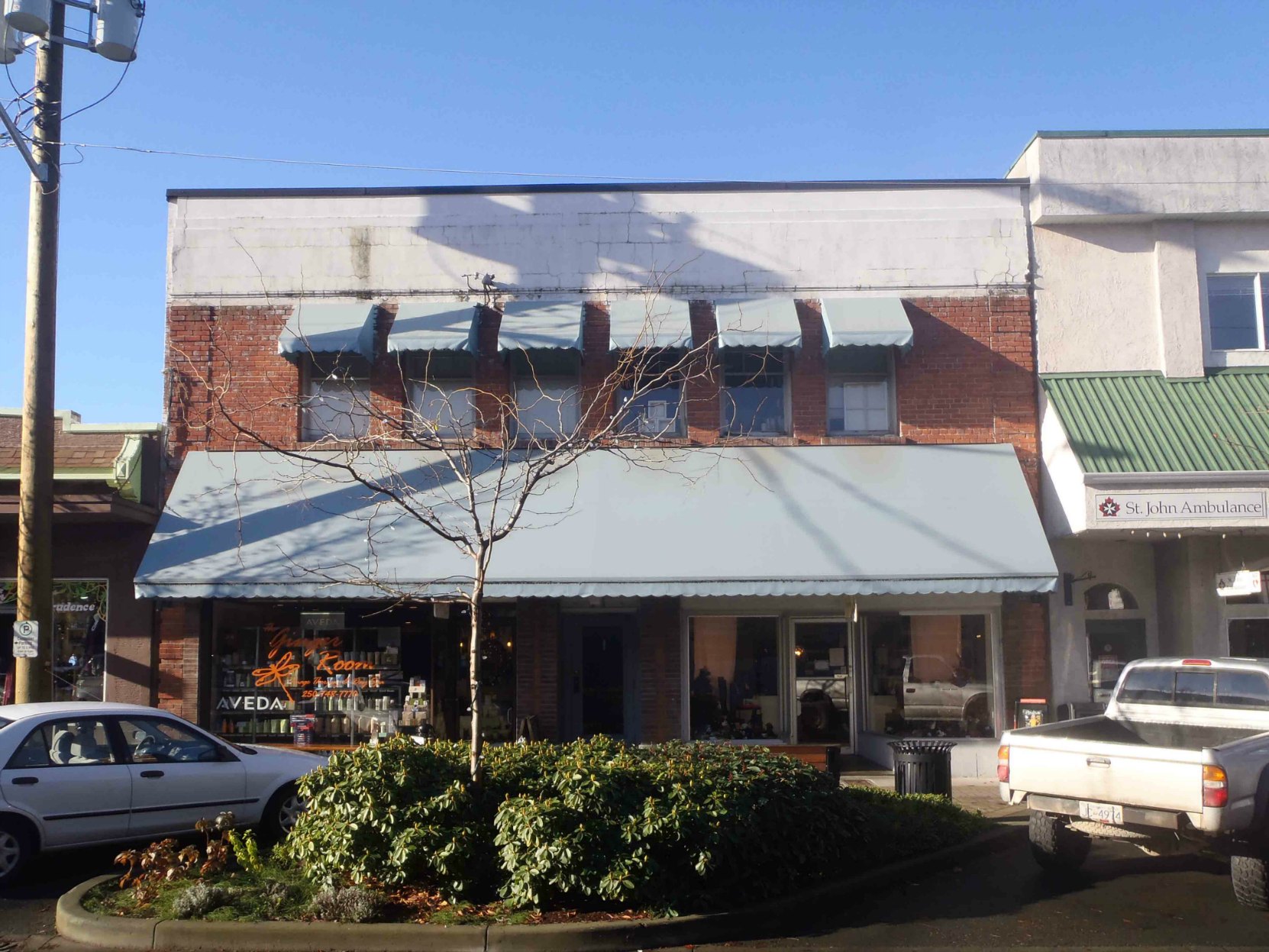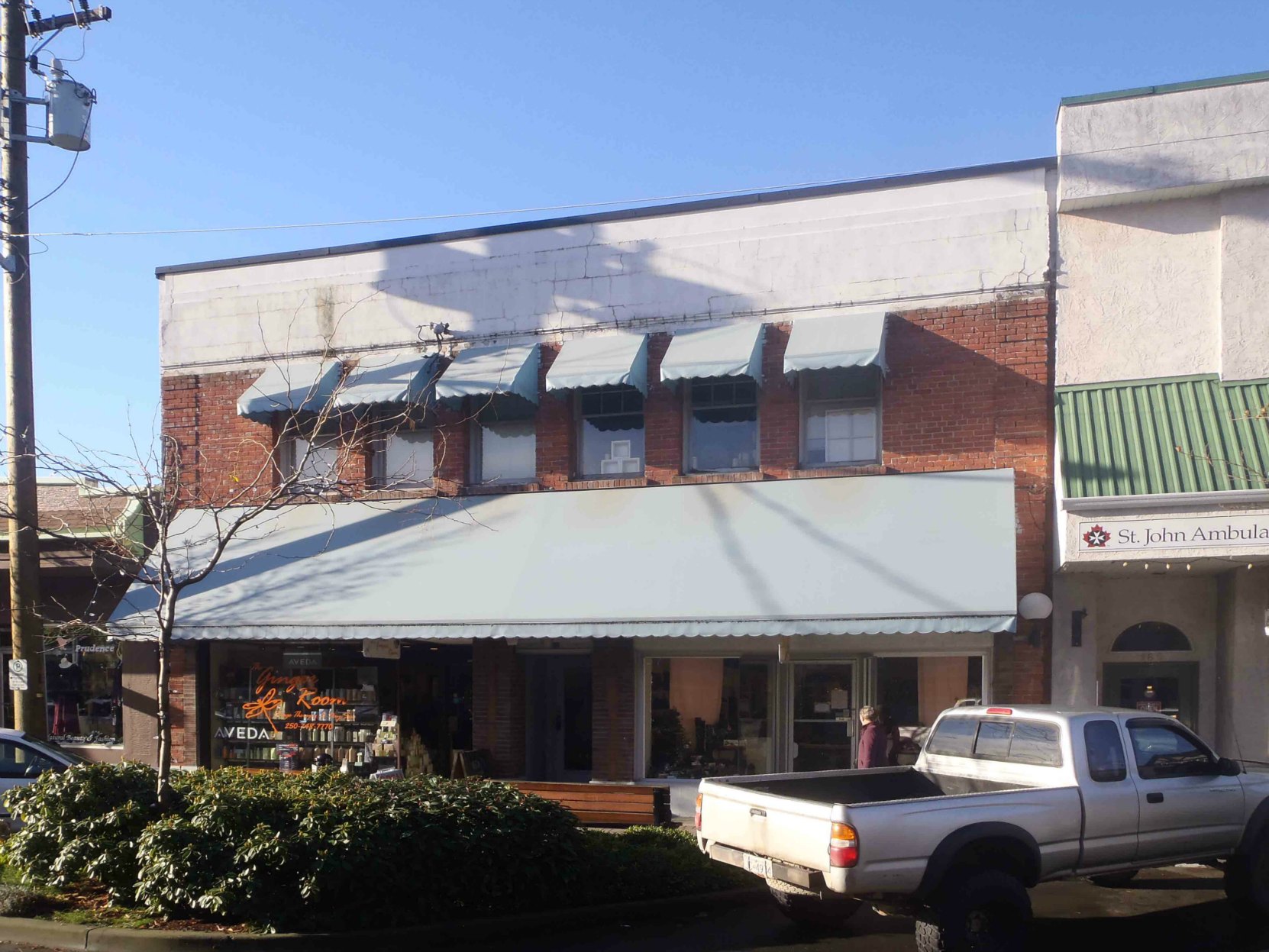Downtown Duncan – Craig Street
The Bazett Building at 161-165 Craig Street, between Station Street and Kenneth Street in downtown Duncan, was built in 1924 by architect Douglas James and contractor Edward W. Lee for Charles Bazett, who used it as a revenue generating investment property.
The original building design called for two retail stores on the street level with a staircase between the stores leading to four residential apartments on the second floor. The Bazett Building was the first mixed use building in Duncan to combine retail space on the main floor with residential space on the upper floor.

Here is a map showing the location of the Bazett Building:
Additional Information on 161-165 Craig Street
- Assessed Value (July 2016): $474,000; Land – $183,600, Buildings – $291,000
- Assessed Value (July 2015): $458,000; Land – $175,800, Buildings – $283,000
- Assessed Value (July 2014): $456,500; Land – $175,500, Buildings – $281,000
A Brief History of the Bazett Building, 161-165 Craig Street
For a photo of the Bazett Building under construction in 1924, click here.
Here is 1924 local newspaper report describing the opening of the Bazett Building.
“BAZETT BUILDING
Handsome Stores And Apartment Block Is Completed
The Bazett building on Craig Street, Duncan, next to The Leader office, the first brick store and apartment building to be erected in the district, received its first tenants this week. The owner is Mr. Charles Bazett.
On Monday Mrs. G.G. Baiss, who has rented for her restaurant one of the two stores in this handsome block, opened for business. Though there are many improvements yet to be made in the restaurant, Mrs. Baiss and her assistants capably catered to a large number of patrons.
The first tenant of an apartment in the block moved in on Tuesday. Entrance to the four suites, which are upstairs, is made by a door situated between the two downstairs business premises. The stairway is carpeted and the landing walls are of a rough white plaster with a crimson burlap dado.
The four flats are similar in every detail and are very compact and comfortable. Each entrance door is fitted with a yale lock and opens into a small passage on the walls of which have been placed hooks for cloak room purposes. The rooms consist of a nice sized sitting room, bedroom, kitchen and bathroom.
The walls of the sitting room and bedroom have been finished with rough white plaster and wallpaper of neutral shades. The floors are stained in these rooms and in the kitchen and bathroom the proprietor has placed linoleum on the floors. The bedroom has ample cupboard accommodation.
Modern Conveniences
The kitchen, though small, has every modern convenience possible. It is fitted up with a range that can be used for wood or coal, a very complete built-in dresser with glass doors, flour and sugar bins and drawers and a large cooling or store cupboard.
Other fixtures include a deep washing up sink, which can also be utilized for washing clothes, an ironing board that folds into a recess in the wall and a clothes drier. Special means for ventilation have been provided and excellent light is obtained through the skylights with are in the kitchen and bathroom. The sitting room and bedroom have windows.
The bathroom includes in addition to the usual features, a roomy linen cupboard, a hot water tank and a built in medicine chest with mirror. Both the kitchen and bathroom are nicely finished throughout.
A ladder is slung on the ceiling of the landing to provide access through an outlet onto the roof, where a hose, long enough to efficiently cover the whole building, is kept in case of fire. A rear stairs leads out to a corrugated galvanized iron building which has been divided into five separate compartments for woodsheds. Two part-basements are underneath the main building, the one under the store being used to house the heating plant and coal chute, the other under the restaurant being for a larder.
Restaurant Fitted Up
One of the stores is not quite completed and at present has no occupant. In store space occupied by Mrs. Baiss the walls have been very effectively paneled and papered, the colour scheme being of a soft yellow with dark brown panels.
The floor, which is stained, is to have carpets later. On the plate rail quaint ornaments of china and brass, with black china cats predominating have been placed. The restaurant is run under the name of “The Black Cat.”
Quite a number of pictures are already hanging on the walls and later Mr. A. Burchett is to exhibit here some of his large collection of paintings. A table on which articles of silverware have been arranged add an effective touch while a writing desk, magazines, a comfortable lounge and easy chairs all give an individual aspect to a service which has been noted for its homelike qualities and cooking.
The kitchen is well arranged and has several built in features. The special restaurant range occupies a position of prominence while the sink and plate rack are of useful size.
The exterior of the whole building is of brick and hollow tile, the facing brick used being a local product. The block is 60 feet long with 40 feet frontage, the stores being 17 by 60 feet each.
The building is lit by electricity throughout and is steam heated. Mr. Douglas James was the architect, Mr. E.W. Lee the contractor. Messrs. R.B. Anderson & Son had charge of the plumbing and Mr. J. Dick of the Cowichan Merchants Ltd. did the electrical work.”

Would you like to leave a comment or question about anything on this page?